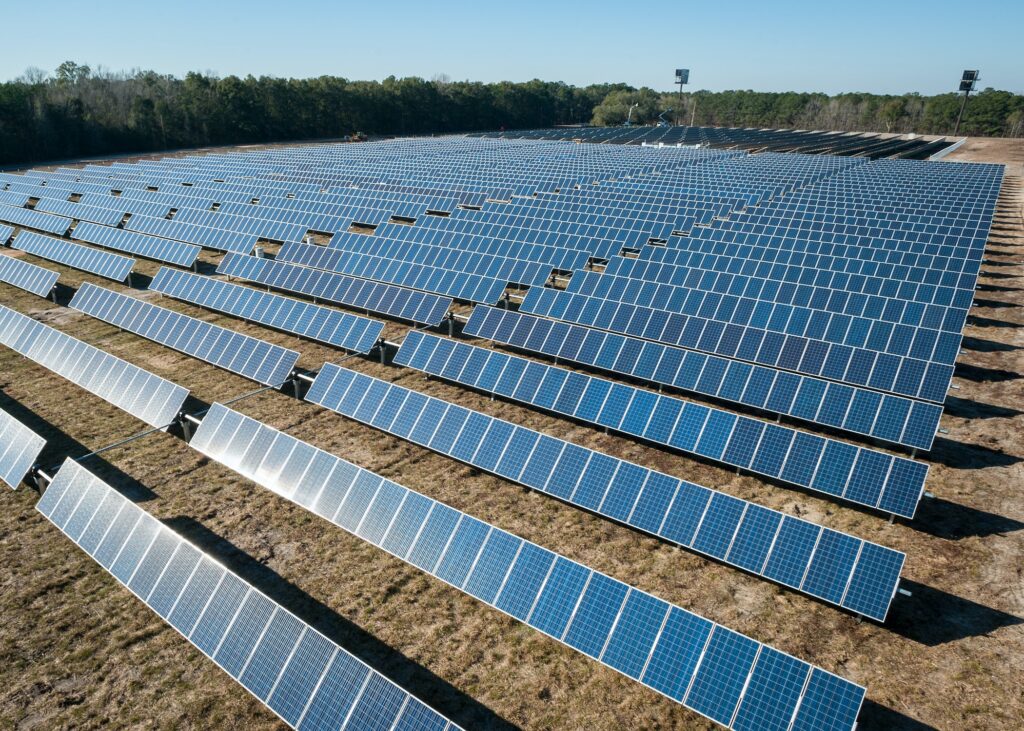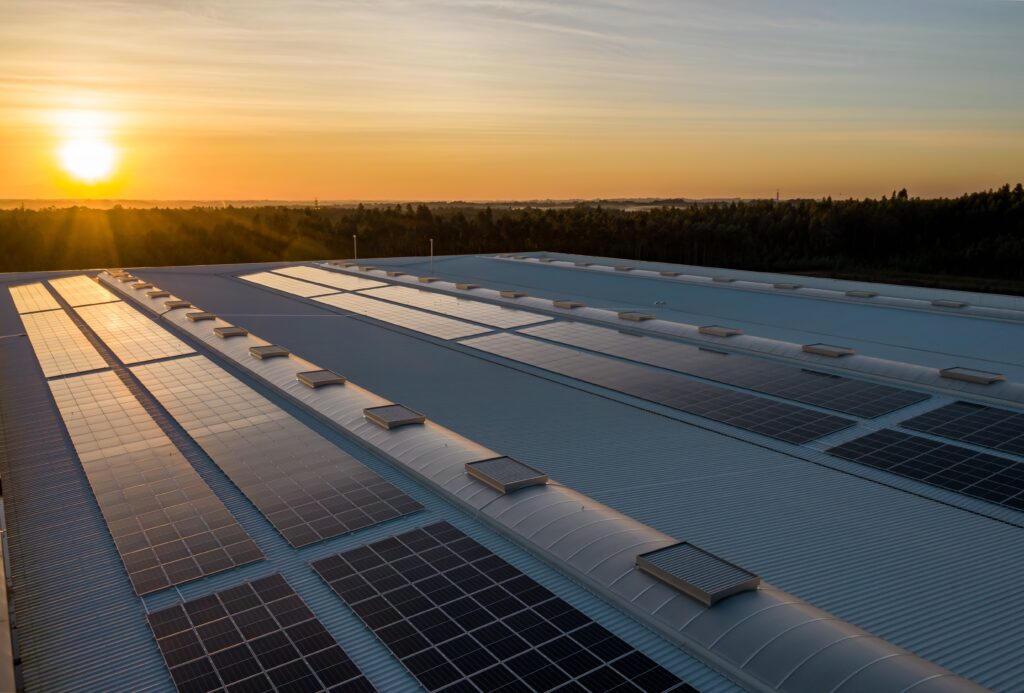In order to power your off-grid solar system efficiently, you may be wondering how many batteries you will need. The number of batteries required will depend on various factors such as the size of your solar system, your energy consumption, and how long you want your system to run without sunlight. By understanding these key considerations, you can ensure that you have the right number of batteries to provide a reliable and sustainable power source for your off-grid lifestyle.

Understanding Off-Grid Solar System
Definition of Off-grid Solar System
An off-grid solar system, also known as a stand-alone solar system, is a self-contained renewable energy system that operates independently of the traditional power grid. It consists of solar panels, batteries, charge controllers, and inverters, allowing you to generate and store your own electricity for use when the sun is not shining.
Main Components of an Off-grid Solar System
- Solar Panels: These capture sunlight and convert it into direct current (DC) electricity.
- Charge Controllers: These regulate the flow of electricity from the solar panels to the batteries, preventing overcharging and ensuring optimal charging efficiency.
- Batteries: These store the excess electricity generated by the solar panels for use during periods of low or no sunlight.
- Inverters: These convert the stored DC electricity from the batteries into alternating current (AC) electricity, which is compatible with household appliances and other electrical loads.
How Off-grid Solar System Works
In an off-grid solar system, solar panels harvest sunlight and convert it into DC electricity. This electricity is then either used to power your electrical loads directly or stored in batteries for later use. Charge controllers ensure that the batteries are charged at the correct voltage to maximize their lifespan. When the sun goes down, or during periods of low sunlight, the batteries supply electricity to power your appliances and devices through the inverters, which convert the stored DC electricity into usable AC electricity.
Basics of Solar Batteries
What is a Solar Battery
A solar battery, also known as a solar energy storage system or solar power battery, is an essential component of an off-grid solar system. It is responsible for storing the excess electricity generated by the solar panels during the day and releasing it when needed, such as when there is no sunlight or during periods of high electricity demand.
Different Types of Solar Batteries
There are several types of solar batteries available for off-grid solar systems:
- Lead-Acid Batteries: These are the most common and affordable type of solar batteries. They are available in two variants: flooded lead-acid batteries and sealed lead-acid batteries. Flooded lead-acid batteries require regular maintenance, while sealed lead-acid batteries are maintenance-free.
- Lithium-Ion Batteries: These batteries have gained popularity in recent years due to their higher energy density, longer lifespan, and lighter weight compared to lead-acid batteries. They are more expensive upfront but offer better performance and require less maintenance.
- Nickel-Based Batteries: Nickel-based batteries, such as nickel-iron and nickel-cadmium batteries, are less common but still used in some off-grid solar systems. They are known for their long cycle life but have lower energy density and higher self-discharge rates.
How Solar Batteries Store Energy
Solar batteries store energy using a chemical reaction that takes place within them. When the solar panels generate excess electricity, it charges the batteries by converting the DC electricity into a chemical form for storage. During discharge, the chemical reaction is reversed, converting the stored energy back into electrical energy. This process allows the batteries to store energy and release it as needed, ensuring a steady and reliable power supply in off-grid solar systems.

The Role of Batteries in an Off-grid Solar System
Energy Storage for Later Use
One of the main roles of batteries in an off-grid solar system is to store excess energy generated by the solar panels during the day for use during periods of low or no sunlight. Without batteries, any excess energy would go to waste, limiting the system’s ability to provide uninterrupted power supply.
Uninterrupted Power Supply
Batteries play a crucial role in ensuring uninterrupted power supply in off-grid solar systems. They provide a reliable source of electricity during periods of low sunlight or inclement weather, allowing you to power your appliances and devices without relying on the traditional power grid.
Power Supply during Peak Demand
During periods of high electricity demand, such as evenings or when multiple appliances are in use simultaneously, batteries provide additional power to meet the increased load. This helps prevent power outages or overloading of the off-grid solar system.
Reducing Dependence on Grid
By utilizing batteries to store and supply electricity, off-grid solar systems reduce reliance on the traditional power grid. This can help lower electricity costs, especially in remote areas where grid connection is expensive or unreliable.
Factors that Determine the Number of Batteries Needed
Daily Energy Consumption
The amount of energy you consume daily plays a significant role in determining the number of batteries needed for your off-grid solar system. The more energy you use, the more batteries you will require to store enough power to meet your needs.
Solar Panel Output
The output of your solar panels, measured in watts or kilowatts, determines the amount of energy available for storage in the batteries. Higher panel output means more energy can be stored, potentially reducing the number of batteries needed.
Battery Capacity
The capacity of the batteries, measured in kilowatt-hours (kWh), determines how much energy can be stored and used. Higher battery capacity means more energy can be stored and a greater amount of power is available during periods of low sunlight.
Number of Sunlight Hours
The amount of sunlight your location receives affects the amount of energy your solar panels can generate. More hours of sunlight result in higher energy production, potentially reducing the number of batteries needed.
Days of Autonomy
Days of autonomy refers to the number of consecutive days an off-grid solar system can operate without sunlight. This factor depends on your energy requirements and the battery capacity. Higher days of autonomy require more batteries for longer periods of power supply without sunlight.

Calculating the Amount of Batteries Needed
Step by Step Guide on Calculating Battery Needs
- Determine your daily energy consumption in kilowatt-hours (kWh).
- Calculate the number of sunlight hours per day in your location.
- Estimate the energy production of your solar panels per day.
- Determine the desired days of autonomy, i.e., the number of days you want your system to operate without sunlight.
- Calculate the total energy needed to cover your desired days of autonomy by multiplying your daily energy consumption by the number of days of autonomy.
- Divide the total energy needed by the battery’s capacity to determine the number of batteries required.
Important Equations and Measurements
- Energy Consumption (kWh) = Power (kW) x Time (hours)
- Days of Autonomy = Total Energy Needed (kWh) / Daily Energy Consumption (kWh)
- Battery Capacity (kWh) = Total Energy Needed (kWh) / Number of Batteries
Practical Examples
-
You consume an average of 10 kWh of energy per day, have 6 hours of sunlight, and want a system that can operate for 3 days without sunlight. Your location receives around 60 kWh of solar energy per day. Considering an 80% battery efficiency and lead-acid batteries with a capacity of 10 kWh, the number of batteries needed would be:
Total Energy Needed = Daily Energy Consumption x Days of Autonomy = 10 kWh x 3 days = 30 kWh
Number of Batteries = Total Energy Needed / Battery Capacity = 30 kWh / 10 kWh = 3 batteries
-
For a higher power demand of 20 kWh per day, with the same sunlight hours and days of autonomy, the calculation would be:
Total Energy Needed = Daily Energy Consumption x Days of Autonomy = 20 kWh x 3 days = 60 kWh
Number of Batteries = Total Energy Needed / Battery Capacity = 60 kWh / 10 kWh = 6 batteries
Maintaining and Optimizing Battery Performance
Best Practices for Maintaining Solar Batteries
- Regularly monitor the battery’s state of charge (SOC) and voltage levels.
- Keep the batteries clean and free from dust, dirt, and debris.
- Avoid overcharging and deep discharging, as this can reduce battery lifespan.
- Maintain proper ventilation to prevent overheating.
- Follow the manufacturer’s guidelines for maintenance and maintenance procedures.
Warnings and Precautions for Battery Use
- Avoid short-circuiting the battery terminals.
- Handle batteries with care, as they contain corrosive materials.
- Wear protective gear when performing maintenance or handling batteries.
- Do not mix different types or ages of batteries in the same system.
- Dispose of old or damaged batteries properly.
Advances in Battery Technology
Battery technology is constantly advancing, leading to improvements in performance, efficiency, and lifespan. Lithium-ion batteries, for example, offer higher energy density, longer cycle life, and faster charging capabilities compared to traditional lead-acid batteries. These advancements make off-grid solar systems more efficient and reliable.
Choosing the Right Type of Battery for Your Off-grid Solar System
Lead-Acid Batteries
Lead-acid batteries are a cost-effective and widely available option for off-grid solar systems. They are durable and can withstand frequent charging and discharging cycles. However, they require regular maintenance, have a shorter lifespan compared to other battery types, and are heavier.
Lithium-Ion Batteries
Lithium-ion batteries have gained popularity in recent years due to their superior performance. They have a longer lifespan, higher energy density, and are lighter weight compared to lead-acid batteries. Though more expensive upfront, they require less maintenance and can offer better long-term cost savings.
Nickel-Based Batteries
Nickel-based batteries, such as nickel-iron and nickel-cadmium batteries, are less common in off-grid solar systems. While they have a long cycle life, they have lower energy density and higher self-discharge rates. These batteries may be suitable for specific applications where their unique characteristics outweigh their drawbacks.
Factors to Consider When Choosing a Battery
- Energy requirements and daily consumption
- Lifespan and cycle life
- Maintenance requirements
- Budget constraints
- Environmental impact
- Weight and physical size
- Specific features and performance needs
Costs of Off-grid Solar Batteries
Initial Purchase Cost of Batteries
The cost of off-grid solar batteries can vary depending on the type, capacity, and brand. Typically, lithium-ion batteries are more expensive upfront compared to lead-acid batteries. As of 2021, lead-acid batteries can range from around $100 to $500 per kilowatt-hour (kWh), while lithium-ion batteries can range from $300 to $1000 per kWh.
Maintenance and Replacement Costs
Lead-acid batteries require regular maintenance, such as checking the water levels and cleaning the terminals, which may incur additional costs over their lifespan. Lithium-ion batteries, on the other hand, have minimal maintenance requirements. Both battery types will eventually require replacement over time, with lithium-ion batteries having a longer lifespan and potentially reducing replacement costs in the long run.
Cost Savings from Going Off-grid
While the initial investment for an off-grid solar system can be significant, there are potential long-term cost savings. By generating your own electricity and reducing reliance on the grid, you can save on utility bills and potentially recoup the upfront costs over time. Additionally, as battery technology continues to advance, prices are expected to decrease, making off-grid solar batteries more affordable in the future.
Benefits and Drawbacks of Off-grid Solar Batteries
Environmental Benefits
Off-grid solar batteries enable you to reduce your carbon footprint by generating clean, renewable energy from the sun. By relying on solar power instead of fossil fuels, you contribute to the reduction of greenhouse gas emissions and combat climate change.
Energy Independence
Off-grid solar systems with batteries provide independence from the traditional power grid. This can be particularly advantageous in rural or remote areas where grid connection is challenging or expensive. It offers peace of mind knowing that you have a reliable source of power even during grid outages or emergencies.
Potential Financial Savings
Off-grid solar systems can lead to long-term financial savings. By generating your own electricity, you can reduce or eliminate monthly utility bills. Additionally, with net metering programs in some areas, you may have the opportunity to sell excess electricity back to the grid, further offsetting your costs.
Installation and Maintenance Challenges
Setting up an off-grid solar system with batteries can be more complex compared to grid-tied systems. Proper sizing, installation, and maintenance are critical for optimal performance and longevity. It is essential to have a thorough understanding of the system components and seek professional guidance if needed.
Limitations in Power Supply
Off-grid solar systems rely solely on the energy stored in the batteries, which is limited by their capacity. This means that during periods of extended cloud cover or high energy demand, the power supply may be insufficient to meet all electrical needs. Proper system sizing and battery capacity are crucial to overcome these limitations.
Conclusion: The Importance of Proper Battery Sizing
Optimizing the use of solar energy
Properly sizing the batteries in an off-grid solar system is vital to maximize the use of solar energy. Oversized or undersized batteries can lead to inefficient energy storage or insufficient power supply, respectively. Calculating the correct battery capacity based on energy consumption, sunlight hours, and days of autonomy ensures the system operates optimally.
Preventing Energy Loss and System Damage
Choosing the right number and type of batteries prevents energy loss and potential damage to the system. Inadequate battery capacity may result in wasted energy or premature battery failure. Additionally, oversizing the batteries may lead to unnecessary expenses and reduced system efficiency.
Saving on Costs in the Long Run
Proper battery sizing helps minimize costs in the long run. By accurately determining your energy needs and using the right number of batteries, you can avoid unnecessary upfront expenses and optimize the return on your investment. Additionally, properly sized batteries tend to have longer lifespans, reducing replacement and maintenance costs.
A thorough understanding of off-grid solar systems and the role of batteries allows you to harness the benefits of renewable energy and achieve energy independence. By considering various factors, choosing the right type of battery, and properly sizing the system, you can enjoy a reliable and sustainable source of power while minimizing environmental impact and maximizing cost savings.




